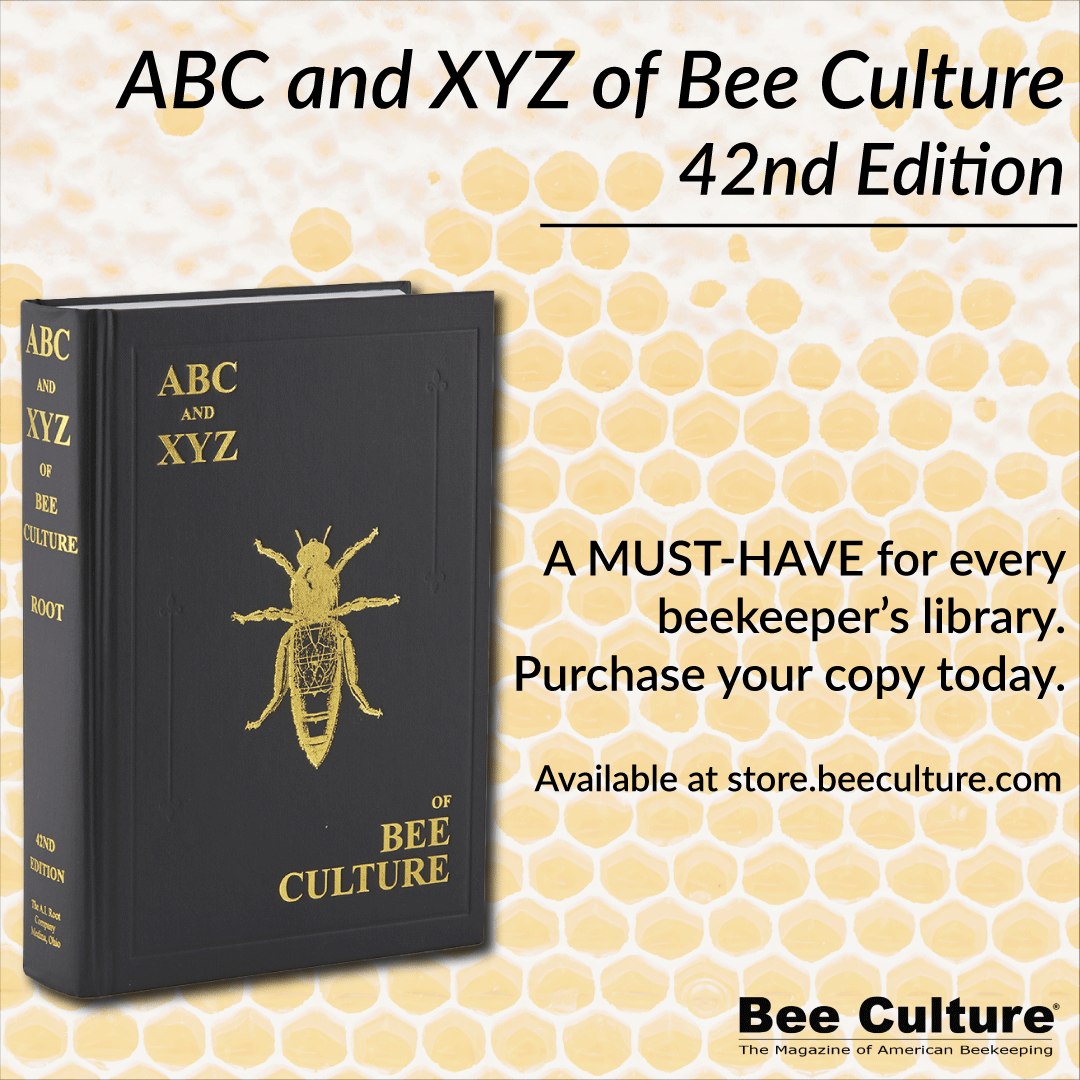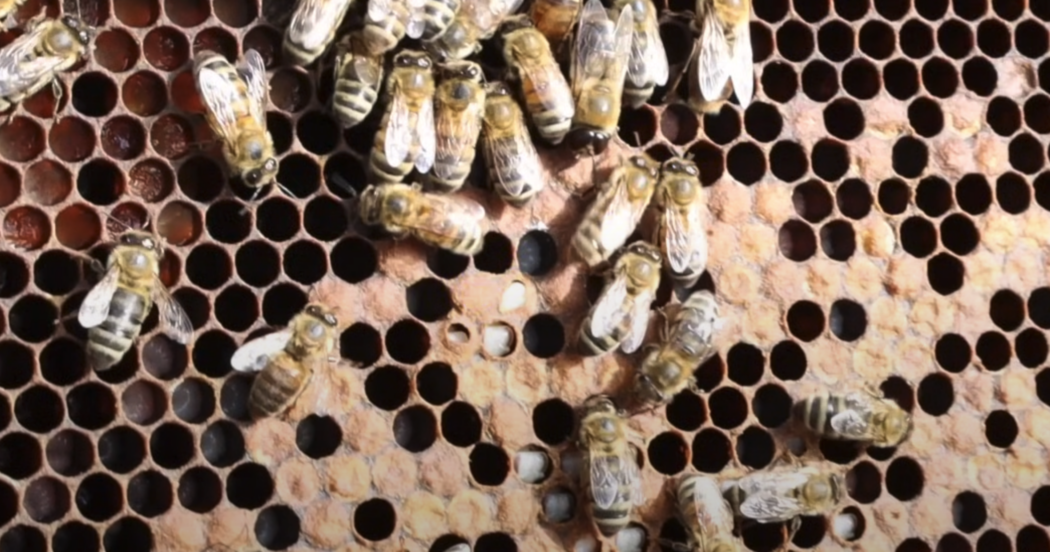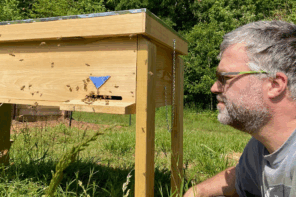Click Here if you listened. We’d love to know what you think. There is even a spot for feedback!
Read along below!
The Hive Detective:
Solving the Mystery Of Your Bees
By: David Burns
Everyone likes a good mystery. You know, the clues are hidden in plain sight, the suspect isn’t who you expect, and the key to the mystery is staring you right in the face — but only if you know what to look for. I’ve come to believe that the most successful beekeepers are good detectives because our bees are one of nature’s most fascinating mysteries.
Mystery, by definition, is “something that is unknown, unexplained, or secret.” This is exactly what’s happening in our hives, something unknown, unexplained and somewhat secretive. Our bees are driven by instinct, biology and environmental cues. This makes it hard for us to understand what they are doing and why. When something looks off it’s our job to figure out why without first jumping to the wrong conclusion. This is where our work as detectives (citizen scientists) begins.
To first solve a good mystery, we must make careful observations before making any assumptions. It is very easy as beekeepers to make a quick judgment the moment we lift out a frame. We might see scattered brood and assume our queen is failing. What if we do not see any eggs? It’s easy to jump to the conclusion that the hive is queenless. Strange flying patterns at the entrance? Is this a swarm? It may be an orientation flight. Not so fast my dear Watson. A single bee with frayed wings may not reveal deformed wing virus at all.
A good beekeeper, like a good detective, approaches their hive with more curiosity than certainty. We should never open our hive to prove what we suspect or fear. We are not inspecting our hive to prove what we heard on our social media group; we inspect to uncover the facts.

This is where it gets tricky. As humans we are biased creatures. We see the world through a lens shaped by our upbringing, our education, our culture, our fears and even what we read on social media. Often, we’re not even aware that we are carrying these assumptions into the beeyard.
Sometimes we don’t even see what’s right in front of us on our frame because we’ve already decided what we’re seeing. Detective movies are just like this. We are strung along to believe we know who did it, only to be totally surprised to see we were way off. But this is how our brains work. We’re always trying to shortcut the conclusion. But shortcuts in beekeeping often lead to misdiagnosis and unnecessary interventions. Instead, we need to slow down and ask, “What am I actually looking at here? And what am I not seeing?”
To be a skilled hive inspection detective, we need a method, a process that will take us beyond the obvious. Here’s a checklist I recommend every beekeeping detective use during their inspections:
- I use the acronym CLUE: Constantly Look, Uncover, Examine.
- The more clues we discover the more able we are to make a proper diagnosis of our colony. Let’s go step by step to gather, uncover and examine clues during our inspection:
- Examine larvae carefully. Look at their color, shape and consistency.
- Study the brood pattern across multiple frames, not just one.
- Assess the colony’s overall behavior: Is it calm, busy or loud?
- Check for resources: the amount of nectar, pollen and honey may reveal a lot.
- Look for evidence of the queen (eggs), not just the queen herself.
- Take notes of your findings maybe even photos for future comparison.
- Consult experts, books and mentors when something seems off and you can’t figure it out.
With this approach, you’re not reacting — you’re investigating. You’re not responding — you’re learning.
Here’s two examples of what this detective work looks like during an inspection:
First, a beekeeper opens a hive and finds bald brood. They could panic and assume this is surely a bad disease. But instead, they gather more clues such as a mite count, any evidence of wax moth webbing or tunneling? Also, they review notes on the queen to determine if she may have strong hygienic traits. These clues will unravel the mystery of the bald brood. Wax moth larvae could be tunneling below the capped brood, causing the bald brood. A mite infestation could be the culprit. Or a VSH queen could be producing daughters that are uncapping mite infested brood.

Second case, another beekeeper finds multiple eggs in brood cells. They could jump to the conclusion they have laying workers. It would be easy to stick to that conclusion and follow down that path. However, let’s look for more clues. Do we have a queen or brood? Ah ha, we do. So, it can’t be laying workers. We discover a recently opened queen cell, and a queen. Case solved. We have a new queen that is developing her laying rhythm and is still learning the ropes and laying multiple eggs in a few cells. A week later reveals everything is normal.
In both cases CLUE (Constantly Look, Uncover, Examine) helped us solved the mystery.
One of the most common mistakes I see in new (and even seasoned) beekeepers is hyper-focusing on a single issue such as panicking over one odd looking bee or one strange section of a frame or one day of strange orientation flights. But a good detective always steps back and looks at the bigger picture while gathering more clues. What matters in a mystery is ongoing irregularities. That’s what reveals the truth.
Beekeeping inspections will always involve surprises. Your hive will always throw you a curveball just when you think you’ve figured this beekeeping thing out. That’s part of the appeal of beekeeping for some people, and part of the frustration for others. But if you train yourself to slow down, observe deeply and resist the urge to fix everything at once, you’ll not only be a better beekeeper — you’ll learn to enjoy solving the continual beekeeping mysteries.
So, the next time you head out to inspect your hive, open the hive with an open mind. Bring your notebook, and your curiosity. Be ready to play detective. The bees have a story to tell. Your job is to listen, take notes, piece it together and solve the mystery.
If you’d like to watch my YouTube video where I discuss this topic in more detail, visit: https://www.honeybeesonline.com/davids-youtube-channel











